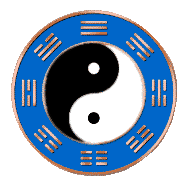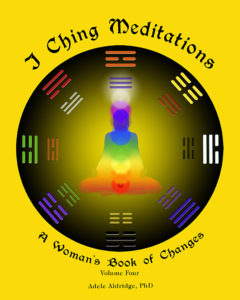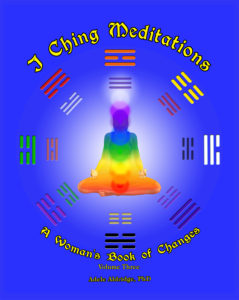 I Ching can be described in a number of ways depending on your frame of reference. When I did a Google search for I Ching just now I found 1,630,000 links! The top link was Wikipedia.
I Ching can be described in a number of ways depending on your frame of reference. When I did a Google search for I Ching just now I found 1,630,000 links! The top link was Wikipedia.
I found so many interesting links in Wikipedia alone that I had to get out of there so I could get on with posting my statement here.
So my response to “What is the I Ching?” is limited here to my point of view as an artist with an interest in symbolic forms. I Ching has been called the original computer with its binary system of organization. And for those of you who haven’t any idea about the nature of I Ching I would describe I Ching as nature herself.
I Ching is a philosophy dating back to the origins of Chinese civilization that evolved along with Chinese writing and culture. This philosophy of right living is based on the premise that everything in the universe arises out of two forces – Yang and Yin – the Chinese words for creative and receptive energy or masculine and feminine forces. The concept of this philosophy is that if you follow the way of nature you will find the right way and right time for action in one’s own life.
This ancient work from China is an inter-play of symbols that are derived from the elements of nature. I Ching is used as a tool of divination for aligning one’s self with those elemental forces so that one may “swim the way the river is flowing.”
By consulting I Ching we recognize ourselves as part of the flux of nature and that the universe and we are one organism. This Book of Changes has only one law that remains constant, that is, the only thing that never changes is change itself.
In the layers of symbols for the Trigrams, I Ching projects attributes of action, an animal, parts of the body, the place in the family, color and the direction in the compass. You can see my illustrations for the Trigrams here.
I Ching is the quintessential symbol book of all time, containing layers of symbols, one within the other where symbols are used to describe other symbols. It is, therefore, no wonder that people find this book of wisdom obscure. Because the nature of a symbol always points to something beyond itself, the meanings can never be pinned down but are always open to each new reader.
I Ching is like a grand prism reflecting a myriad of images, all coming from one source, as they refract into the interior of each individual mind who seeks its wisdom. The power of the I Ching is only activated through the interaction of the human mind. The archetypes in the I Ching were programmed over the centuries by the continual input and evolution of many human psyches. Therefore I Ching reflects a collective response to the human condition as a part of nature.
The I Ching can then be viewed as a piece of nature – from the point of view of the human psyche reflecting back, as a collective, where it stands within the whole. When consulting the I Ching one activates this archetypal material by allowing the surface of the waters of one’s own interior well to be rippled. The I Ching itself cautions that the book is not for everyone, anticipating that not all psyches will be compelled to participate in or understand its symbolic mysteries. I experience The I Ching as a psychic computer, coming to me through thousands of years of time.



[…] Quoting my own article, “What is I Ching,” […]